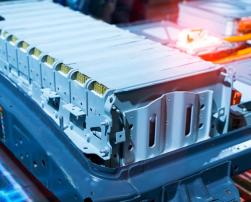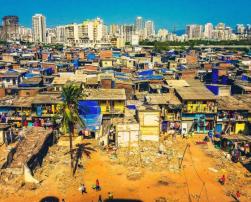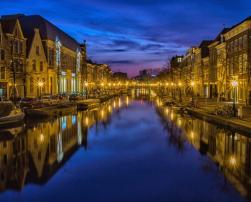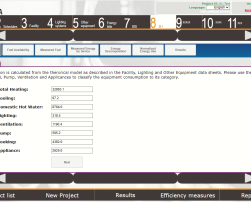
The EU low-carbon transition will increase the demand of new raw materials. What would be their environmental impact?
In the perspective of the EU low-carbon transition, this study has assessed the environmental costs associated with meeting this demand by 2050, specifically focusing on three main strategic sectors: renewable energy, e-mobility, defence & aerospace. Researchers affirm that these costs will be outweighted by the benefits of the low-carbon transition.
Editorial team

Is circularity really accessible to all society?
When taking into consideration poor areas and society, we see that circularity principles are not easily implemented, nor easily understood by people. Indeed, as part of what the Houseful project is doing, there is the need to face the problem in a different perspective, such as, for example, focusing on how much energy would be saved if circularity was applied.
Editorial team

How is the Dutch building sector addressing circularity?
British construction are studying how to get the construction industry closer to circular principles by assessing the Dutch industry´s processes in terms of circularity. For example, the Dutch government has put in place financial support which benefits both the building owner, and the supply chain.
Editorial team

Energy Efficiency in Retail Sector: what Measures to put in place
Have you noticed that the topic of energy saving is currently at the heart of all conversations? Energy efficiency, new regulations, decrees or energy saving measures... The time has come to reduce energy consumption. Individuals, companies and local authorities are all being called upon to use less energy. But, in concrete terms, what is expected from companies? Keep on reading to know more!
Daniel Aragón
How windows are used to regulate building temperature
Why does windows get so much attention in the green building space? Windows play a significant role in a building’s carbon footprint. The specifications can lower energy loss by up to 50% through thermal regulation, the type of windows and their location — all crucial in design.
Construction21 Build UP user
Collective self-consumption photovoltaics to supply the Paris-Saclay heating and cooling grid
The heating and cooling grid of the Paris-Saclay science and technology cluster, delivered in 2019, is one of the pilot sites of the European D2Grids project. This so-called "fifth-generation" heating and cooling grid (5GDHC) should make it possible to meet many of the challenges of the energy transition: energy autonomy, consumption of renewable and local energy, grids decarbonation, etc. It covers an area of 28 municipalities in the south-west of the Île-de-France region.
Mawya Rahal, energy project manager at the EPA Paris-Saclay, and Lucas Lazzarini, energy engineer at SEQENS, answer relevant questions on the topic in the following interview.
Mawya Rahal, energy project manager at the EPA Paris-Saclay, and Lucas Lazzarini, energy engineer at SEQENS, answer relevant questions on the topic in the following interview.
Construction21 Build UP user
Reinhard Six wins the Roger Léron Award 2022
Reinhard Six, a retired engineer and European energy efficiency policy and implementation leader, won the Roger Léron Award 2022 in the event celebrated last 4th October in Brussels: “Energy efficiency is not just something we can do. We can do it, but we must do it. So let’s do it!”.
Construction21 Build UP user
5th generation for heating and cooling grids integrate renewable electricity to boost the decarbonisation of European cities!
What is the future and potential for district heating grids in Europe? In this interview, Mathilde Henry, Energy Project Manager at GreenFlex, presents the European D2Grids project: a unique concept so-called “5GDHC” to be developed in North-West Europe, which is experimented on five pilot sites, while working on the potential synergies with renewable electricity.
Construction21 Build UP user

Installation of the prototype DualSun PVT panels for the EXCESS project
The H2020 EXCESS project aims to spearhead four innovative demonstration projects, introducing technical solutions that enable buildings to produce more renewable energy than they consume over the course of a year. One of their demonstration projects is based in Hasselt which represent the coastal climatic zone.
Editorial team

ePANACEA Video tutorial for the assessment Method 1
Two years into the Horizon 2020 project ePANACEA, the project partners shared videos of the ePANACEA Assessment Method 1 implemented on the SEPAP (Smart Energy Performance Assessment Platform) on the project’s YouTube channel.
Angeliki Kaplani